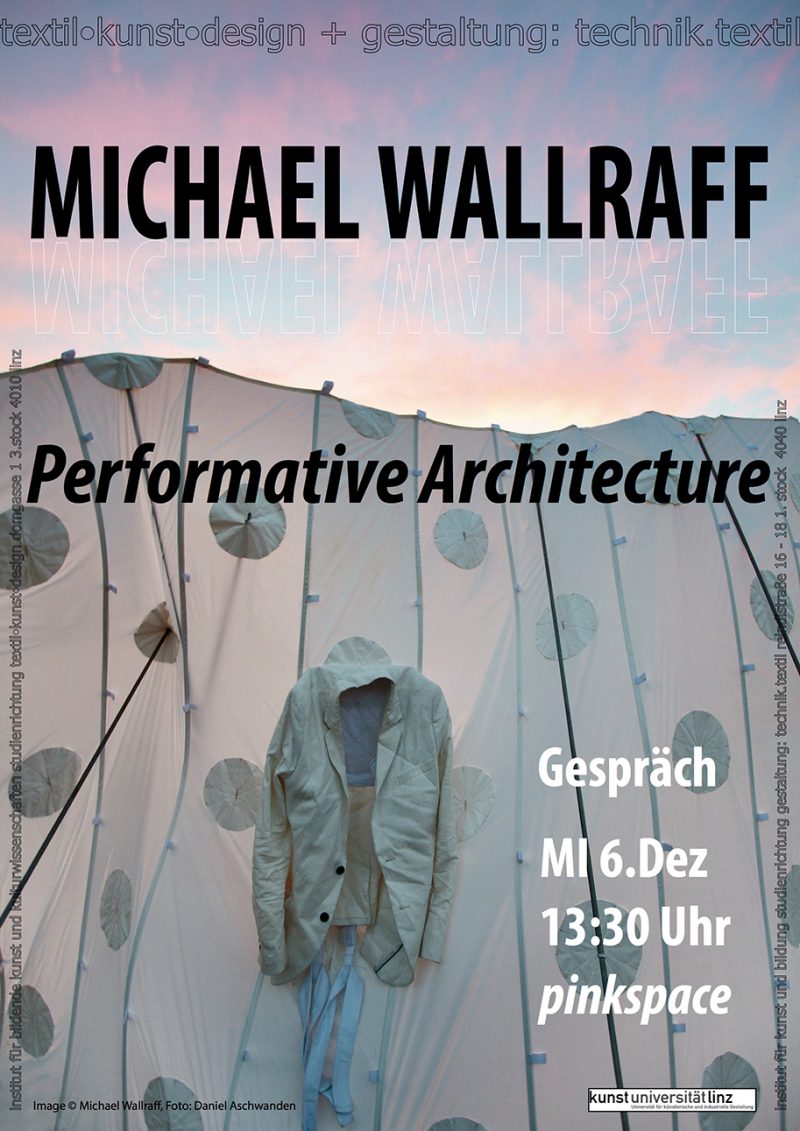Es geht um eine physische und unmittelbare Verbindung von Mensch und Raum. Es geht um eine Verlängerung, eine Erweiterung des Körpers und um die Möglichkeit, Raum nicht nach fixen Plänen fertigen zu lassen und als starres Gebilde zu benutzen, sondern Raum individuell und spontan zu produzieren. Ein Raumgenerator, veränderbar, in ständigem Bewegungsfluss, wie unser Körper selbst. Zwischen hart und weich, steif und flexibel, schmerzhaft, befreiend, zusammenziehend, entfaltend, wackelig und zugleich stabil, schützend oder auch angreifbar, äußeren Kräften und Einflüssen ausgesetzt, fragil und flüchtig….
What is concerned is a physical and unmediated connection between human beings and space. We are interested in extending, expanding the body, and in the possibility to produce space not based on fixed plans or to use it as a rigid construct, but rather to produce space individually and spontaneously—a generator of space, changeable in a constant flow of movement, just like our bodies themselves. Between hard and soft, stiff and flexible, painful, liberating, pulling together, unfolding, unstable and stable at the same time, protective or also vulnerable, exposed to outside forces and influences, fragile and fleeting . . .
MICHAEL WALLRAFF
is an architect. He studied scenery design and architecture in Vienna and Los Angeles. His Viennese office was established in 1999 and is active in various fields: from city planning and designs for new buildings, adaptations, additions, stages, exhibitions, and furniture, to objects of everyday culture.
Michael Wallraff teaches architectural design at the Technical University Vienna and at the University of Innsbruck and is working on various research projects. His book Vertical Public Space was published on the
occasion of a solo exhibition at The MAK— Austrian Museum of Applied Arts / Contemporary
Art Vienna—in 2011. In addition to the Schütte-Lihotzky Fellowship (1998) and the Schindler Fellowship (1999), Michael Wallraff has also received funding from the city of Vienna’s “departure” program (2009) as well as numerous competition prizes.
